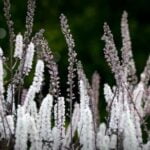
A well-designed backyard can transform an ordinary outdoor space into a stunning oasis that offers both aesthetic and functional benefits. Backyard landscaping is key in creating a harmonious environment that seamlessly blends with your home’s architecture and enhances its overall curb appeal.
Whether you have a large yard or a small one, investing time and effort into your backyard landscaping can significantly increase the value of your property while providing you with a tranquil retreat right outside your door.
The importance of backyard landscaping goes beyond mere aesthetics. A thoughtfully designed outdoor space can become an extension of your living area, offering endless possibilities for relaxation, entertainment, and connection with nature. From hosting memorable gatherings to enjoying quiet moments of solitude amidst lush greenery, a well-landscaped backyard creates opportunities for both enjoyment and practicality.
Moreover, strategic and well-planned backyard landscaping can greatly enhance the curb appeal of your property. As potential buyers or guests approach your home, an inviting and well-maintained backyard can leave a lasting impression.
It adds charm to the overall appearance of your residence and instantly boosts its value. Whether you are planning to sell in the future or simply want to create a beautiful outdoor space for yourself, investing in backyard landscaping is a wise decision that yields numerous benefits.
In this article, we will explore various aspects of backyard landscaping to help you create the outdoor haven you desire. From choosing the right plants for different climates to maximizing space functionality in small yards, we will provide valuable insights and tips for every homeowner.
Whether you are on a tight budget or looking to go green with sustainable practices, this article has got you covered. So sit back, relax, and let’s dive into the wonderful world of backyard landscaping.
Benefits of Investing in Backyard Landscaping
Investing in backyard landscaping not only enhances the beauty of your outdoor space but also increases the value of your property and improves its curb appeal. A well-designed and well-maintained backyard can leave a lasting impression on potential buyers or visitors, making it a worthwhile investment for homeowners.
One of the key benefits of backyard landscaping is the increase in property value. According to studies, a well-landscaped yard can increase the value of a property by up to 20%. This means that by investing in quality landscaping, homeowners have the potential to recoup much of their initial costs when selling their homes.
In addition to increasing property value, backyard landscaping also enhances curb appeal. The exterior appearance of a house greatly influences buyers’ first impressions. A beautiful and well-maintained yard can instantly catch the eye and create an inviting atmosphere. This can make potential buyers more interested in seeing the interior of your home, ultimately increasing your chances of selling quickly and at a higher price.
| Benefit | Data |
|---|---|
| Increase in property value | Up to 20% |
| Effect on selling price | Higher selling price |
By enhancing both property value and curb appeal, backyard landscaping provides homeowners with numerous advantages. Whether you plan to sell your home or simply want to enjoy a beautiful outdoor space, investing in professional landscape design and maintenance can be highly beneficial.
Choosing the Right Plants for Your Backyard
When it comes to backyard landscaping, selecting the right plants is a crucial step in creating a beautiful and sustainable outdoor space. Different climates require different considerations, as certain plants thrive better in specific environments. By choosing suitable plants for your backyard, you can ensure their health and longevity while transforming your outdoor area into a vibrant and flourishing oasis.
Considerations for Different Climates
One of the key factors to keep in mind when selecting plants for your backyard is your climate zone. Understanding the temperature range, rainfall levels, and soil conditions in your area will help you determine which plants will thrive.
For example, if you live in a hot and arid climate, you will want to choose drought-tolerant plants that can withstand long periods without water. On the other hand, if you live in a region with heavy rainfall, it’s important to select plants that can handle excess moisture without developing root rot.
Recommended Plants for Different Climates
In colder climates where winters are harsh, consider planting hardy perennials such as coneflowers (Echinacea), ornamental grasses like Feather Reed Grass (Calamagrostis x acutiflora), and shrubs like Winterberry (Ilex verticillata). These types of plants have adapted to withstand cold temperatures and will come back year after year.
For those living in warmer climates or areas with extended growing seasons, tropical plants like hibiscus (Hibiscus rosa-sinensis), bird of paradise (Strelitzia reginae), and palms can add lushness and exotic beauty to your backyard. These plants thrive in heat and humidity, creating a tropical ambiance.
If you reside in coastal regions with saltwater exposure or windy conditions on the coastlines, it’s essential to choose plants that can tolerate salt spray and strong winds. Recommended options include sea oats (Uniola paniculata), beach sunflower (Helianthus debilis), and seagrape (Coccoloba uvifera).
Remember, when selecting plants for your backyard, it’s not only important to consider climate suitability but also factors like soil type, sunlight exposure, and maintenance requirements. Consulting with a local gardening expert or visiting nearby botanical gardens can give you valuable insights into the best plant choices for your specific region.
By carefully choosing the right plants for your backyard based on your climate and other essential factors, you can create a stunning landscape that thrives year-round while reducing the need for excessive water usage or additional maintenance.
Creating a Welcoming Outdoor Entertainment Area
A well-designed outdoor entertainment area can be the perfect space for hosting memorable gatherings with family and friends. Whether you enjoy casual barbecues or elegant dinner parties, creating a welcoming and functional space is key. When planning your backyard landscape, it’s essential to consider the design ideas and tips that will enhance your outdoor entertainment area.
Firstly, think about the layout of the space. It’s important to have designated areas for cooking, dining, lounging, and socializing. This can be achieved by using different materials and furniture to create different zones within your outdoor space.
For example, an outdoor kitchen equipped with a grill and countertop can define the cooking area, while a patio set or dining table creates an inviting atmosphere for meals. Comfortable seating options like lounge chairs or sofas provide a cozy spot for relaxation.
Lighting is another crucial element in creating an inviting outdoor entertainment area. Incorporating various types of lighting fixtures can enhance both the ambiance and functionality of the space. For example, string lights or lanterns suspended above seating areas create a warm and magical glow. Additionally, pathway lights or spotlights can help guide guests through your backyard while ensuring their safety at night.
Furthermore, don’t forget to consider elements of privacy when designing your entertainment area. Depending on your preferences and needs, you could incorporate natural elements such as hedges or trees to create borders around your space. For those who prefer more contemporary designs, privacy screens made from materials like bamboo or fabric can serve as stylish dividers.
By incorporating these design ideas and tips into your backyard landscape planning process, you can create an outdoor entertainment area that is functional, stylish, and perfect for hosting memorable gatherings that will leave lasting impressions on your guests.
Maximizing Space and Functionality
Small yards can present a unique challenge when it comes to backyard landscaping. However, with careful planning and creative design ideas, even the smallest of spaces can be transformed into a functional and beautiful outdoor oasis. In this section, we will explore some innovative backyard landscaping ideas specifically tailored for small yards.
One key strategy for maximizing space in a small yard is to utilize vertical gardening techniques. Vertical gardens are a great way to add greenery and visual interest without taking up valuable ground space. Consider installing trellises or hanging wall planters to grow climbing plants or herbs. Another option is to create a living wall by attaching potted plants to a vertical structure. This not only adds beauty but also helps in reducing the overall footprint of the garden.
In addition to vertical gardening, incorporating multi-purpose furniture and built-in storage can help make the most of limited space. Opt for outdoor seating that doubles as storage, such as benches with hidden compartments or ottomans with lift-up tops.
This allows you to store gardening tools, cushions, and other outdoor necessities while also providing comfortable seating for entertaining guests. Built-in features like shelves or cabinets can be integrated into walls or fences to provide additional storage options without taking up any extra floor space.
It’s important to consider scale and proportion when choosing plants and structures for a small yard. Large trees or oversized furniture can make the space feel cramped and overwhelming. Instead, opt for smaller, compact plant varieties that won’t overpower the yard and choose furniture that is appropriately sized for the space. Light colors and mirrors can also create an illusion of more space in a small yard by reflecting light and visually expanding the area.
Backyard Landscaping Ideas for Small Yards
| Idea | Description |
|---|---|
| Container Gardening | Utilize pots and containers to create a portable garden that can be easily rearranged or moved. |
| Vertical Herb Garden | Grow herbs vertically on a wall or fence using specially designed planters or repurposed pallets. |
| Mirrored Accent Walls | Install mirrors strategically to reflect light and create the illusion of a larger, more open space. |
| Pergolas or Arbors | Add structure and definition to the yard with pergolas or arbors draped in climbing plants. |
| Intimate Seating Areas | Create cozy seating nooks with small bistro sets or built-in benches for relaxing and entertaining. |
By implementing these backyard landscaping ideas for small yards, you can transform your limited outdoor space into a functional and inviting retreat. With a little creativity and careful planning, you can make the most of every square inch and enjoy a beautiful backyard, regardless of its size.
Incorporating Water Features into Your Backyard
Water features can greatly enhance the visual appeal and overall ambiance of your backyard. Whether you have a small or large outdoor space, incorporating water elements such as pools, fountains, and ponds can transform your backyard into a tranquil oasis. This section will provide you with some design ideas and tips to help you create a stunning water feature that will become the focal point of your outdoor space.
Choosing the Right Water Feature
When considering incorporating water features into your backyard, it’s important to choose one that complements the overall style of your outdoor space. For instance, if you have a modern or minimalist backyard, a sleek and geometric pool design may be more appropriate.
On the other hand, if you have a more natural or rustic style, a pond with rocks and plants would blend seamlessly into the landscape. Additionally, consider factors such as space availability, maintenance requirements, and budget when deciding on the right water feature for your backyard.
Pools: Fun and Relaxation
A well-designed pool can serve as both a source of recreation and relaxation in your backyard. Incorporating features such as waterfalls or swim-up bars can add an extra touch of luxury to your pool area. It’s important to remember that building a pool requires careful planning and consideration of factors such as safety regulations, zoning restrictions, and maintenance requirements.
Fountains: Serenity in Motion
Fountains are versatile water features that can fit in any size backyard. From small tabletop fountains to large freestanding ones, there is a wide range of options available to suit various budgets and design preferences. Fountains not only add visual interest but also create soothing sounds that can drown out noise from neighboring areas.
Ponds: Creating an Ecosystem
Ponds can be an excellent addition to any backyard landscape by creating a thriving ecosystem filled with aquatic plants and wildlife. The size and shape of the pond can be tailored to your preferences, whether you want a small ornamental pond or a larger one with koi fish. It’s important to consider factors such as water quality, filtration systems, and maintenance needs when planning and building a pond.
Incorporating water features into your backyard can truly transform your outdoor space into a sanctuary of peace and serenity. Whether you choose to have a pool for recreational purposes, a fountain for its visual and auditory appeal, or a pond to create an ecosystem, the right water feature will add beauty and tranquility to your backyard landscape.
Sustainable Backyard Landscaping
In today’s world, it is becoming increasingly important to prioritize sustainability in all aspects of our lives, including our backyard landscaping. Sustainable backyard landscaping not only helps to conserve water and promote environmental health, but it also adds value and appeal to your property. By incorporating drought-tolerant plants and efficient irrigation systems into your outdoor space, you can create a beautiful and eco-friendly oasis.
One of the key aspects of sustainable backyard landscaping is choosing the right plants that can thrive in your climate with minimal water requirements. Drought-tolerant plants are a great choice as they can withstand dry conditions, reducing the need for excessive watering. Examples of popular drought-tolerant plants include succulents, lavender, yarrow, and agave. When selecting these plants, consider factors such as sunlight exposure, soil type, and local climate conditions to ensure their successful growth.
Efficient irrigation systems are also crucial for sustainable backyard landscaping. Traditional sprinkler systems often lead to water wastage through overspray or evaporation. Consider installing more efficient alternatives such as drip irrigation or micro-sprinklers which deliver water directly to the roots of plants. You can also incorporate rainwater harvesting techniques by utilizing rain barrels or cisterns to collect water for irrigation purposes. This not only conserves resources but also reduces your water bills.
To further enhance sustainability in your backyard landscaping, you can implement other eco-friendly practices such as mulching and composting. Mulching helps retain moisture in the soil while suppressing weed growth. Organic mulches like wood chips or straw are excellent choices as they break down over time, enriching the soil with nutrients. Composting kitchen scraps and garden waste is another sustainable practice that creates nutrient-rich soil amendments while diverting waste from landfills.
By adopting these tips for sustainable backyard landscaping, you can create a vibrant and environmentally-friendly outdoor space that conserves water, reduces waste, and contributes to the overall health of our planet. Not only will you be making a positive impact on the environment, but you will also enjoy the beauty and tranquility of your sustainably designed backyard oasis.
Maintenance and Care for a Beautiful Backyard
Maintaining a beautiful backyard requires regular care and attention to ensure its longevity and visual appeal. By incorporating essential tasks and following seasonal tips, you can keep your backyard looking its best year-round.
One essential task for maintaining a beautiful backyard is regular lawn maintenance. This includes mowing the grass on a consistent schedule, which helps to keep it healthy and prevent weeds from taking over. It is important to adjust the height of the mower according to the season and grass type, as different varieties require different cutting lengths. Additionally, be sure to water the lawn deeply but infrequently, promoting strong root growth while conserving water.
Another crucial aspect of backyard maintenance is proper plant care. This involves pruning trees and shrubs regularly to promote healthy growth and maintain their shape. Dead or damaged branches should be removed promptly to prevent disease or safety hazards. Furthermore, it’s important to fertilize plants according to their specific needs, providing them with the necessary nutrients for optimal growth.
In addition to regular maintenance tasks, there are also seasonal tips that can help you care for your backyard throughout the year. For example, in colder climates, it’s important to winterize your yard by wrapping delicate plants in burlap or providing them with insulation to protect them from frost. On the other hand, in warmer climates, summer heat protection measures such as mulching around plants can help conserve moisture and regulate soil temperature.
By prioritizing these essential tasks and following seasonal tips, you can ensure that your backyard remains beautiful all year long. Regular maintenance not only helps preserve the aesthetics of your outdoor space but also promotes its overall health and longevity. So get out there and take care of your backyard – it will be well worth the effort.
Budget-Friendly Backyard Landscaping
One of the great things about backyard landscaping is that it doesn’t have to break the bank. With some creativity and resourcefulness, you can create a stunning outdoor space on a budget. In this section, we will explore some DIY ideas and cost-saving techniques that will help you achieve a beautiful backyard without spending a fortune.
- Repurposing and upcycling: One of the easiest ways to save money on your backyard landscaping project is by repurposing and upcycling materials. Instead of buying new furniture, consider giving old pieces a fresh coat of paint or reupholstering them. You can also repurpose items like old tires or wooden pallets to create unique planters or seating areas.
- Growing your own plants: Another way to save money is by growing your own plants from seeds or cuttings. This not only saves you money on buying fully grown plants but also allows you to choose from a wider variety of plants that may not be readily available at nurseries. Additionally, growing your own fruits and vegetables can save you money on groceries while adding beauty and functionality to your backyard.
- Mulching: Mulch is not only aesthetically pleasing but also helps retain moisture in the soil, suppresses weed growth, and insulates plant roots during extreme temperatures. Instead of buying expensive mulch, consider using natural materials like wood chips, straw, or grass clippings from your own yard. These alternatives are often free or low-cost options that can be just as effective as store-bought mulch.
- Incorporating recycled materials: Using recycled materials in your backyard landscaping can be both cost-effective and environmentally friendly. Consider using reclaimed bricks or stones for pathways, using old bottles as garden borders, or repurposing broken concrete for retaining walls or decorative elements.
By implementing these DIY ideas and cost-saving techniques, you can create a beautiful backyard oasis without breaking the bank. Remember to be resourceful, think outside the box, and have fun with your landscaping project. With a little creativity and effort, you can transform your backyard into a stunning space that reflects your style and personality.
Finding Inspiration and Hiring Professionals
Designing and creating an impressive backyard landscape can be a daunting task, especially if you lack the inspiration or knowledge to bring your vision to life. Thankfully, there are various resources available to help you find inspiration and guidance in creating a beautiful outdoor space.
Whether it’s browsing through gardening magazines, visiting botanical gardens, or exploring online platforms for design ideas, taking the time to find inspiration is crucial in achieving a backyard that reflects your personal style and preferences.
While DIY projects can be satisfying and budget-friendly, hiring professionals can provide you with expert advice and ensure that your landscaping project is executed flawlessly. Landscaping experts have vast experience in transforming outdoor spaces and can offer valuable insights into which plants will thrive in your climate, how to make the most of your yard’s layout, and unique design features that will enhance the overall aesthetic of your backyard.
Additionally, working with professionals allows you to save time and effort by entrusting the project to capable hands while you focus on other aspects of your life.
When selecting a professional landscaper or designer, it is essential to do thorough research and ask for recommendations from friends or neighbors who have had positive experiences with their own landscaping projects. Take the time to review portfolios or examples of previous work from prospective landscapers so you can assess their style and determine if it aligns with your vision.
Finally, be sure to communicate openly with any potential hires about your desired outcome, budget constraints, and timeline expectations to ensure a successful collaboration.
In conclusion, finding inspiration for backyard landscaping is key when embarking on a project that aims to transform your outdoor space into something truly remarkable. By exploring design ideas through various sources such as magazines or online platforms, you can gather concepts that will help shape your vision.
Furthermore, considering hiring professionals who specialize in landscaping will provide expertise and guidance throughout the process. With careful research and collaboration, your backyard can become a stunning oasis that not only reflects your personal style but also enhances the overall value and appeal of your property.
Frequently Asked Questions
What is the least expensive backyard landscaping?
The least expensive backyard landscaping option would be to start by clearing out any unnecessary clutter or debris from the area. This includes removing any old or decaying plants, weeds, or broken objects. Then, consider using natural elements such as rocks, gravel, or mulch to create defined pathways or borders for your garden beds.
These materials can often be found at affordable prices at local garden centers or even online. Additionally, you can opt for low-maintenance plants and flowers that are easy to grow and require minimal upkeep, reducing the cost of maintenance in the long run.
How do I landscape my yard on a budget?
Landscaping your yard on a budget requires careful planning and creativity. One way to save money is by starting small and tackling one section of your yard at a time rather than trying to renovate the entire space all at once.
Focus on key areas such as the entrance or a focal point like a patio or seating area where you can invest in some eye-catching elements like colorful pots, outdoor lighting, or inexpensive furniture pieces found at thrift stores or online marketplaces. It’s also important to do thorough research before purchasing plants and materials to ensure you’re getting the best deals available locally or even from online nurseries.
How do I layout my backyard?
When laying out your backyard, it’s beneficial to first assess the size and shape of the space you have available. Consider how you intend to use your yard – whether it’s for relaxation, gardening, entertaining guests, playing sports, or other activities – and design your layout accordingly.
Start by dividing the yard into different zones based on these activities and create paths that connect them while allowing for easy movement between areas. Take advantage of natural features such as trees or fences as boundaries and points of interest within your layout.




